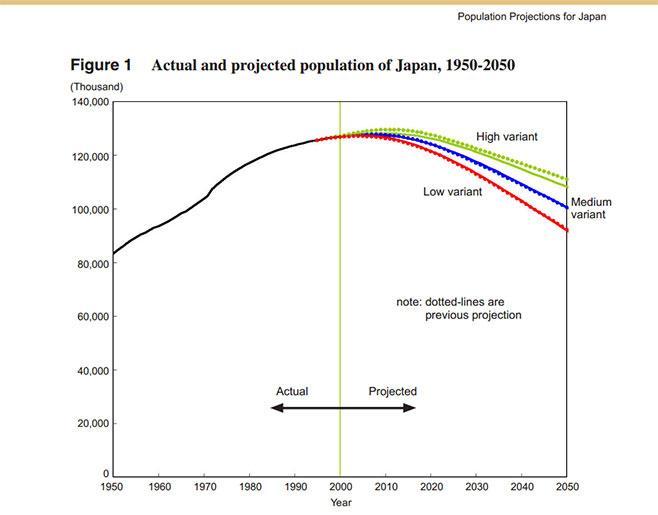Much has been written about Japan’s shrinking population. The population stopped growing and flattened at 127 million since 2006, but by 2050 it will shrink to 90 or 110 million, depending which assumptions you believe. Interestingly, the working age population is already in decline – it fell from 85 million to 80 million in the past 10 years (the 65+ group increased from 24 to 30 million in the same period).
There is much discussion about this demographic drag on GNP, and how to motivate Japan’s women to bear more than 1.13 children, none of which has worked so far. Hence, the inevitable debate over whether Japan should encourage immigration, whether this homogeneous culture can percolate a melting pot. So far noone in power is taking that chance. There are alternate ways to look at this demographic situation. The research paper The Economic Impact of the Black Death (David Routt, 2010) looks at the Bubonic Plague which decimated 1/3 of Europe’s population in the 14th century. Many studies focused on the physical, social, and cultural destruction caused by the Plauge, but Routt’s study looks at economic effects. The resulting labor shortage stimulated incomes in the centuries following the Plague, leading to greater freedom on the personal level and greater efficiency on the management level. One theory sees these changes as the forerunner of the Enlightenment Period.
In the past 10 years, Japan’s per capita GNP grew 7.5%, a hair more than the U.S. In the same period, the per capita income of Japan’s working age people increased almost double that of the US (14.3%). Maybe a shrinking population is not a bad thing, if the country can manage its health and pension budgets. Could it be that the coming decline to 100 million will trigger a “Japanese Renaissance” (not to mention more elbow room on the Metro).


